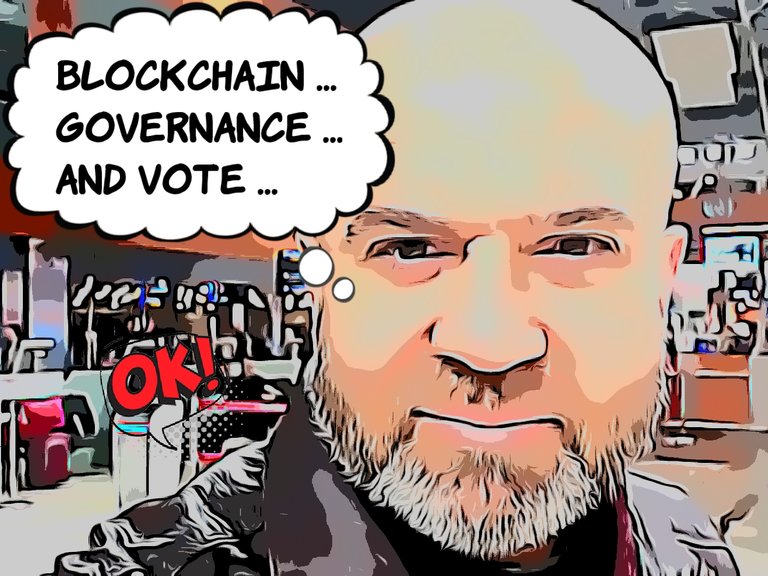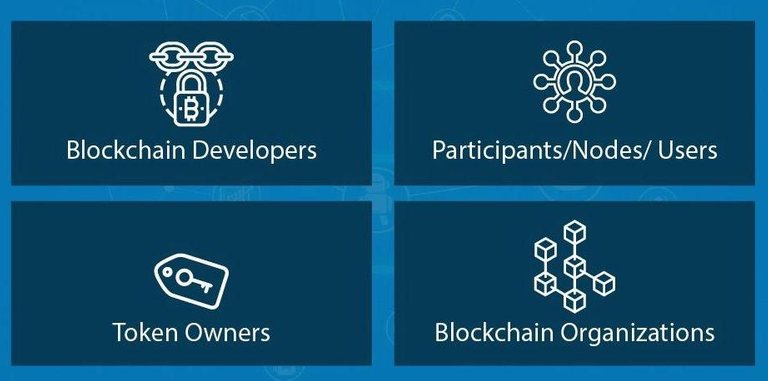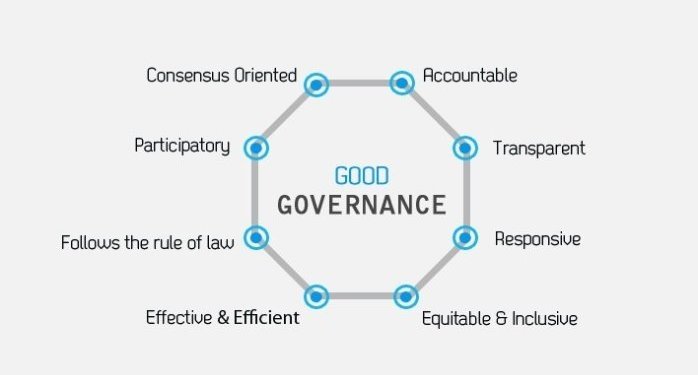
Blockchain technology; It is the distribution of reliability, transparency and measurability to the internet environment by allowing a central server or an authority to be removed. Thus, participants connected to the blockchain both help the system to function and play a role in the future of the system.
How can users direct the future of the system ... ?
By participating in the voting ... How ... ? Lets start ...
What is a blockchain network ... ?

It is a system with a distributed ledger similar to a shared database. Transactions are recorded on the blockchain and shared with all participants. Whenever a new transaction is made, a new block must be added to the blockchain. However, there are consensus protocols that must be followed for the transaction to be considered valid. Miners, also called nodes, validate the data to ensure that the data is correct and the parameters related to the transaction are met.
After miners complete their validation, the results are sent to the network. After review and consensus by other nodes or participants, a new block is added to the network. Miners often receive some form of compensation for their efforts, called a Proof-of-Work (PoW) system or process.
What is Blockchain Governance ... ?
Cryptocurrency is a system for managing and enforcing changes in blockchains. Change initiation rules are coded into the blockchain protocol. Developers propose changes through code updates, and each node gets a vote on whether to accept the proposed change.
Blockchain governance systems only work online. Changes to a blockchain are recommended through code updates. Suggestions for improvement to make changes to the blockchain should be submitted by the developers. A core group, mostly developers, is responsible for coordinating and reaching consensus among stakeholders.
Who are these Stakeholders ... ?

Miners operating nodes that verify transactions
Developers responsible for core blockchain algorithms
Users or participants who use and invest in various cryptocurrencies
Participants or Miners; It can vote to accept or reject the proposed amendment. However, not all nodes have equal voting rights. Nodes with more coins have more votes compared to nodes with relatively few coins. If the change is accepted, it is included in the blockchain and is based on. In some instances of the blockchain management application, the updated code can be rolled back to the previous version of the baseline if the proposed change fails.
There are Various Types of Blockchain Governance. It may differ in each blockchain.
A few examples;
Current governance systems in Bitcoin and Ethereum are informal. They were designed with a decentralized ethos first proclaimed by Satoshi Nakamoto in his original article.
Tezos (XTZ); uses a self-modifying ledger format. The proposed changes are applied to the coin's blockchain and transferred to a test version of the chain. If the planned changes are successful, it will be converted to a production version of the blockchain. If not, they are taken back.
Ripple (XRP); when it needs to make a code change to the XRP Ledger to respond to opportunities or threats, it must go through a voting process; this is consistent with its general approach to transaction validation. The majority of validators should vote on a change before it's included in the next code version. This process is fair, efficient, decentralized and allows the majority of validators to quickly update the network without causing the chaos we've seen. No wonder Ripple has been able to make such incredible updates to the XRP Ledger over time! This includes performance improvements on the local ledger11 that increase throughput to 1,500 TPS and the creation of horizontally scaled payment channels with more computing power.
Dfinity (ICP); announced its plan to adopt a hard-coded constitution on its network. The constitution triggers passive and active actions. An example of the former might be an increase in reward size for blocks, while the latter might involve quarantining certain parts of the network for updates or rollbacks.
Avalanche (AVAX); Due to Avalanche's Proof-of-Stake consensus, validators only need modest hardware requirements and don't use huge amounts of energy. Avalanche's consensus mechanism is theoretically scalable to millions of validators simultaneously participating in the consensus, offering unparalleled decentralization compared to Bitcoin, which currently has 5 mining operations controlling the majority of Bitcoin's hash power.
Advantages of Blockchain Governance
Being a Decentralized Governance; Each node is allowed to vote on the proposed change and can read or discuss its benefits and drawbacks.
Fast Turnaround Time; Informal governance systems require time and effort among stakeholders to reach consensus. Blockchain governance achieves consensus among stakeholders on proposed changes in a relatively short time.
Hard Fork Probability Decreases Significantly; This significantly reduces the likelihood of a hard fork, as each proposed change requires consensus from all nodes. Through the use of rewards, blockchain governance provides economic incentives for nodes to participate in the voting process.
Informal governance process; does not provide economic incentives to end users who use or invest in cryptocurrencies for daily transactions. Instead, the economic incentives belong to miners and developers. After voting ends, all node operators must follow the decision.
Disadvantages of Informal Blockchain Governance; (Bitcoin and Ethereum)
It claims to be centralized between miners and developers. As proof, they point to two prominent bifurcations in the cryptocurrency ecosystem.
Ethereum Hard Fork 2016; The first is the split of the original Ethereum blockchain into Ethereum Classic (ETC) and Ethereum (ETH) in 2016 as a result of an attack on the system in which $50 million in funds were stolen. A hard fork was made to secure the network and return the stolen funds to their original owners. A hard fork is a major change to a blockchain protocol that can make previous blocks or transactions valid or invalid. A hard fork requires developers and nodes to agree to upgrades or changes to protocols. Sometimes a hard fork is not agreed upon by all participants, which can generate anxiety, controversy and criticism.
Bitcoin Hard Fork 2017; In 2017, Bitcoin also went through a hard fork that resulted in two separate blockchains. Bitcoin and Bitcoin Cash. At the time, the Bitcoin community was trying to determine how to improve the scalability of the network, or its ability to process more transactions simultaneously. As new transactions are added to a network, only so many transactions can be processed at the same time. For example, Bitcoin can only process one megabyte of transactions at a time, causing delays in completing transactions.
During the fork, bitcoin's proposal to increase the average block size on the blockchain was rejected by the cryptocurrency's core development team. They rejected the change, despite the high transaction fees making bitcoin's use as a tool for everyday transactions unsustainable. The only constituencies that benefited from high transaction fees were miners. Eventually, a renegade group of developers and miners walked away to create their own cryptocurrency with variable block sizes. The hard fork between Bitcoin and Bitcoin cash was done in part to increase the transaction limit from one megabyte to eight megabytes.
Disadvantages of Blockchain Governance
Blockchain Governance; It emerged as an alternative to informal management systems. It claims to solve problems of centralization by involving all nodes in a blockchain network in the decision-making process.
Blockchain technology offers an inclusive technology approach where all participants can share the benefits. Updates to the technology are likely to continue as the blockchain community and networks seek to improve their scalability allowing them to process more transactions and compete with traditional electronic payment systems like Visa.
Has Low Voter Turnout; As with real-world elections, low voter turnout can become an issue for chain governance. It can cause a single node to manipulate the overall future direction of the protocol.
Users with large amounts of cryptocurrency can manipulate votes; Nodes with more tokens have greater voting effects. It may shift from miners and developers to users and investors who may be interested in maximizing future profits rather than developing the protocol for innovative use cases.

My last words; Blockchain Governance, It is a system of thought that puts forward facts and logic that ensures the peaceful and legitimate resolution of conflicts in a pluralistic society, without resorting to external sources to justify its legitimacy. If you want to have a say in the future of the cryptocurrencies you own, you should participate in the voting ... In today's world, where democracy cannot be lived to the full, it can be a means of returning to democracy ...
A small detail; To participate in voting, cryptocurrencies must be in wallets. You are allowed to vote based on your wallet address...
I hope you are familiar with Blockchain Governance. See you on new issues ... I wish you and your family a healthy day ...
You can also follow me on Twitter if you wish.
Posted Using LeoFinance Beta
Congratulations @acikgoz! You have completed the following achievement on the Hive blockchain and have been rewarded with new badge(s):
Your next target is to reach 1250 upvotes.
You can view your badges on your board and compare yourself to others in the Ranking
If you no longer want to receive notifications, reply to this comment with the word
STOPCheck out the last post from @hivebuzz:
Support the HiveBuzz project. Vote for our proposal!